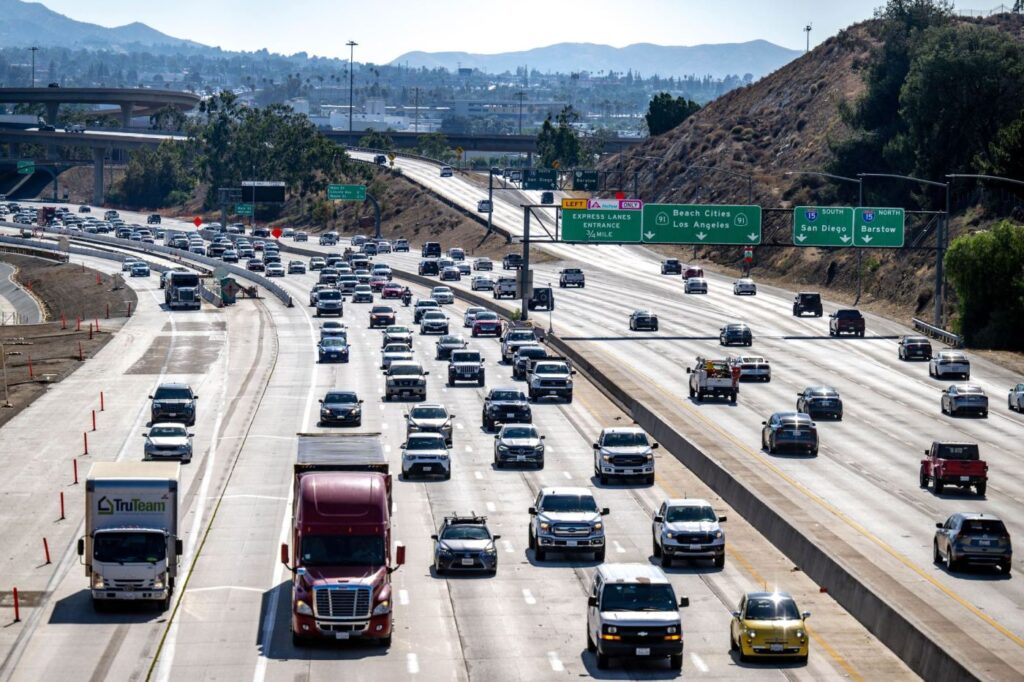
Q: Chris Smith of Highland asked why Department of Motor Vehicles examiners don’t test new drivers by making them enter and exit a freeway as part of the test to obtain a driver’s license. “I find many young drivers have no clue how to merge onto the freeway. Instead of getting up to speed with the freeway traffic, they slow down and cause more of a bottleneck. I see others who will not even let you in to enter the freeway … I just think the DMV should spend time observing freeway driving when testing drivers and less time driving around the block,” Smith said.
A: We ran this by the DMV Office of Public Affairs/Media Relations and here is what they said in an email: “The DMV undertook a multiyear effort to field test and validate changes to the drive test recommended by an independent report by McKnight & Stewart (1990). Based on this evaluation, freeway driving, including entering and exiting a freeway, was removed from the Driver Performance Evaluation, the test administered to beginner drivers. This was done based on the additional time required to add the freeway component to the test, and because certain DMV field offices are too far from a freeway to allow for reasonable access in a timely manner.”
The DMV noted that it reviews and approves all driver’s education curriculum and that entering and exiting the freeway is a required topic in the Driver Education Lesson Plan. Completing a driver’s education course is required to receive a permit.
Weather and driving
Monsoon Season and Driving: Caltrans wants the traveling public to know that the National Weather Service has designated June 15-Sept. 13 as Monsoon Weather Season, which means summer rainstorms and flooding can affect driving conditions and roads throughout Riverside and San Bernardino counties. During monsoon season, mountain and desert routes can be affected by storms.
The Centers for Disease Control and Prevention says more than half of all flood-related deaths happen because people walk into, or near, flood waters and underestimate the water’s force. Deaths also occur in cars swept downstream. Six inches of fast-moving flood water can knock over an adult, a foot of rushing water can carry away most cars, and two feet of water can carry away an SUV or a truck, according to Caltrans.
Related Articles
If there’s no red curb, can you legally park beside a fire hydrant?
What’s legal when turning in a second right-turn lane, gas-saving tips for a summer road trip
Here are five tips for safe driving during monsoon season:
• Monitor weather and the news for updated storm information. Avoid traveling during a storm. The Weather Channel app is a good one to install on your cell phone for updated information.
• Lightning strikes can start a wildfire and fry the electrical system in your car if it’s hit. Check travel conditions for road closures.
• If you get caught in a storm while driving and visibility gets bad, pull over to the far right or get off the road until conditions improve.
• If you keep driving, turn on headlights and slow down. Keep a big distance between you and the vehicle in front of you.
• Flooded roads can cause vehicles to hydroplane and lose control unexpectedly. Keep a safe distance from other vehicles.
Caltrans has installed “Turn Around Don’t Drown” signs provided by the National Weather Service in locations on state highways in Riverside and San Bernardino counties where flash flooding can occur. Always follow the directions when signs are advised of a closed or flooded road and do not try to make it through.
Do you commute to work in the Inland Empire? Spend a lot of time in your vehicle? Have questions about driving, freeways, toll roads or parking? If so, write or call On the Road and we’ll try to answer your questions. Please include your question or issue, name, city of residence, phone number and email address. Write [email protected] or call 951-368-9670.
